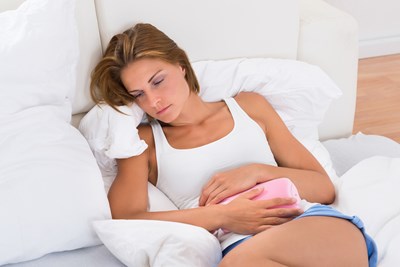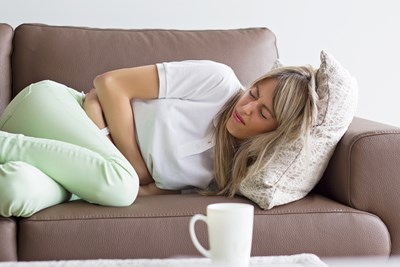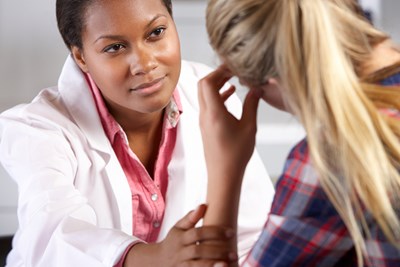Premenstrual Syndrome, or PMS, is a collection of symptoms exclusive to menstruating women. Although mood changes among women tend to be brushed aside because “she’s just PMS-ing,” in fact, PMS is actually more noticeable by the physical conditions it manifests, as opposed to the more severe premenstrual dysphoric disorder, in which emotional disruption is the more key symptom. Despite its dubious existence, PMS has symptoms, physiological causes, diagnostic criteria, and helpful treatments just like any other condition.
PMS Symptoms
Emotional symptoms may include anxiety, depression, bouts of crying, extreme irritability, or alternating wildly between moods. Other behavioral signs of PMS may include sleeplessness or fatigue, trouble concentrating, strange food cravings, and a desire to be away from people. Physically, PMS may manifest as constipation or diarrhea; aches and pains, particularly of the head, back, joints, or muscles; tender breasts; acne; bloating; or weight gain. Symptoms generally occur in the days leading up to the first day of a woman’s period and cease within the first days of menstruation.
PMS Causes
The specific cause of PMS is another of science’s great, undiscovered mysteries. Changes in hormones as a woman’s body goes through it play a large role. Much like with pregnancy or menopause, the body and the brain are subjected to rapidly changing hormonal levels and chemical responses. Some experts suggest that the hormonal changes result in a decrease in levels of serotonin, a neurotransmitter that contributes to balancing moods, thus feelings of sadness and irritability, as well as some physical responses.
Pre-existing emotional issues, such as depression or chronic stress are not solely responsible for bringing on PMS, but their presence can trigger or worsen symptoms. Additionally, a lack of certain vital nutrients (such as zinc) or too much caffeine, salt, or alcohol can increase the chances of a rough few days before menstruation. Additionally, women from their 20s to 40s, women with children, or those with a family history of mood disorders are more likely than others to have PMS.
PMS Diagnosis
Unfortunately, there is no PMS Test. When symptoms reach a point where a woman feels it’s time to seek medical assistance in managing her periods, it can be helpful to track and list symptoms in the weeks or months leading up to a doctor’s appointment. Although symptoms may be physical or emotional, physical symptoms must be present to be considered true PMS.
PMS Treatment
There are several remedies that can help manage PMS, although there is no cure. For mild to moderate symptoms, dietary changes may help. Avoid salty foods, which induce bloated feelings. In cases of extreme water retention, talk to your doctor to see if a diuretic might be helpful for you. Eat plenty of fruits and vegetables, not only for the fiber to help with gastrointestinal symptoms, but also for the key nutrients that will keep the body healthier and thus more able to handle factors that trigger PMS symptoms.
Birth control is often a doctor’s go-to method of managing PMS, but it is important to be aware of the potential side effects of any long-term prescription, which can ultimately be worse than the PMS. Over the counter anti-inflammatories may be sufficient to manage the aches, pains, and cramping that come along with your monthly cycle.




